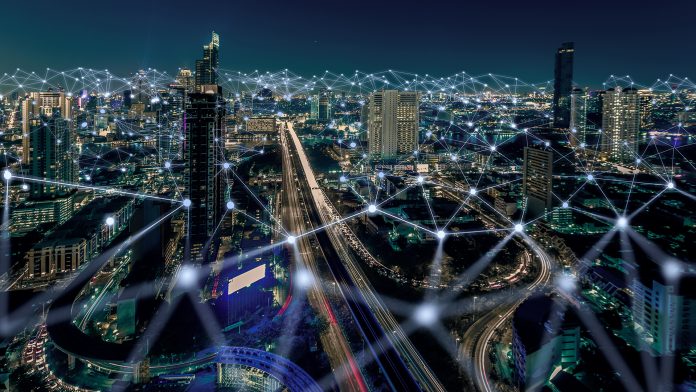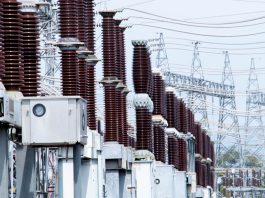Reimagining the United States power grid could save consumers $50bn a year, using new smart electricity grid power technology.
A novel plan that offers partnership in keeping the United States electricity grid stable and reliable by using smart electricity grid technology, could be a win for both consumers and utility operators.
The largest ever simulation of its kind, modelled on the Texas power grid, concluded that consumers could potentially save 15% on their annual electricity bill by partnering with utilities. In this system, consumers would coordinate with their electric utility operator to dynamically control big energy users, like heat pumps, water heaters and electric vehicle charging stations.
Transactive energy
The pattern of this kind of flexible control over energy supply and usage, is labelled ‘transactive’ as it relies on an agreement between consumers and utilities. However, a transactive energy system has never been deployed on a large scale, and a lot remains unknown about its largescale performance.
As a result, the Department of Energy’s Office of Electricity called upon the transactive energy experts at the Pacific Northwest Laboratory to study how this system could work in practice.
“Because Texas’s grid is quite representative of the nation’s energy system, it not only enabled the modelling and simulation of transactive concepts but provided a reliable extrapolation of the results and potential economic impacts to the broader United States grid and customers,” commented Hayden Reeve, a PNNL transactive energy expert and technical advisor, who led the team of engineers, economists and programmers who designed and executed the study.
The simulation demonstrated that if a transactive energy system were deployed on the grid, peak loads would be reduced by 9% to 15%. These savings from the smart electricity grid could translate to economic benefits of up to $5bn annually in Texas alone, or up to $50bn annually if deployed across the entire continental United States. The savings would equal the annual output of 180 coal-fired power plants nationally.
Cutting out power black outs
By now, most people have experienced or witnessed how extreme weather or natural disasters can cause havoc on our current power distribution systems. That vulnerability is magnified by our reliance on a few centralised power sources and a grid system that sometimes struggles to match supply with demand. Further, decarbonisation of the electric grid will mean that more power will come from different kinds of renewable energy sources, such as wind and solar. Therefore, avoiding sudden spikes or dips—power brown or black outs—becomes paramount.
The study’s findings indicate that a transactive energy system would reduce daily load swings by 20% to 44%. As more electric vehicles come into use, the study, perhaps counterintuitively, showed that smart vehicle charging stations provide even larger electric peak load reductions because they offer additional flexibility in scheduled charging times and power consumption.
“A smart grid can act as a shock absorber, balancing out mismatches between supply and demand,” Reeve said. “Through our study, we sought to understand just how valuable effective coordination of the electric grid could be to the nation, utilities and customers. Working with commercial building owners and consumers to automatically adjust energy usage represents a practical, win-win step towards the decarbonisation of the electrical, building and transportation sectors without compromising the comfort and safety of participating homes and businesses.”
One key component of this strategy is the adoption of smart appliances and load controls. These dynamic resources can learn how to consume energy more efficiently, adjusting their use for brief periods of time to free up electricity for other needs. For example, instead of charging an electric vehicle in the early evening when energy demand and price is high, transactive energy participants would rely on a smart load control to delay charging their vehicle until demand is low and electricity cheaper. This approach not only reduces stress on the existing grid infrastructure, but it also allows utilities more time to plan for next-generation energy storage and distribution infrastructure that is currently in development.
Transactive energy as a central component
In a transactive energy system, the power grid, homes, commercial buildings, electric appliances and charging stations are in constant contact. Smart devices receive a forecast of energy prices at various times of the day and develop a strategy to meet consumer preferences while reducing cost and overall electricity demand. A local retail market in turn coordinates the overall demand with the larger wholesale market. All parties negotiate energy procurement and consumption levels, cost, timing, and delivery in a dynamic pricing scheme.
While this concept may seem futuristic, it is quite possible to accomplish and is already being deployed in a demonstration project in the city of Spokane’s Eco-District. Here, the research team is developing and testing a transactive energy coordination scheme and retail marketplace. The approach also includes the use of PNNL-devised transactive software agents.
Smart electricity grid power technology
Texas’s primary power grid (ERCOT) provided the basis for PNNL’s analysis. Researchers created highly detailed models that represented the ERCOT power network, including more than 100 power generation sources and 40 different utilities operating on the transmission system. The analysis also included detailed representations of 60,000 homes and businesses, as well as their energy-consuming appliances.
Researchers used the models to conduct multiple simulations under various renewable energy generation scenarios. Each simulation demonstrated how the energy system would react to the addition of differing amounts of intermittent power sources, such as wind and solar. The research team also developed a detailed economic model to understand the yearly cost impacts for operators and customers. Finally, they looked at upfront costs associated with labour and software expenses, as well as the costs for buying and installing smart devices in homes and businesses.
Another important goal of the study entailed evaluating the impact of a new kind of mediator in the grid economy. This entity, called a distribution system operator, would be required to manage a grid that has multiple energy sources owned and operated by distinct entities, all contributing energy to the grid at different times and amounts. In addition, this distribution system operator would negotiate the transactions with customers that allow flexible load control. The goal would be to support efficient and reliable grid operation. The study confirmed the value of establishing entities, such as a distribution system operator, to manage transactive energy.
Overall, the PNNL research demonstrated the clear benefits of reimagining how the electric grid could accommodate a future where clean renewable energy is a much bigger contributor and more of our transportation needs depend on access to electricity.
“These findings make a strong case for investment in scaled deployments of transactive energy systems,” concluded Christopher Irwin, a program manager for the Office of Electricity, Department of Energy, in its Smart Grid standards and interoperability efforts. “As the nation moves towards a zero-carbon future, a more adaptable energy system could help accelerate the broader deployment of electric vehicles, solar energy and the conversion of homes and buildings to clean electricity sources.”









